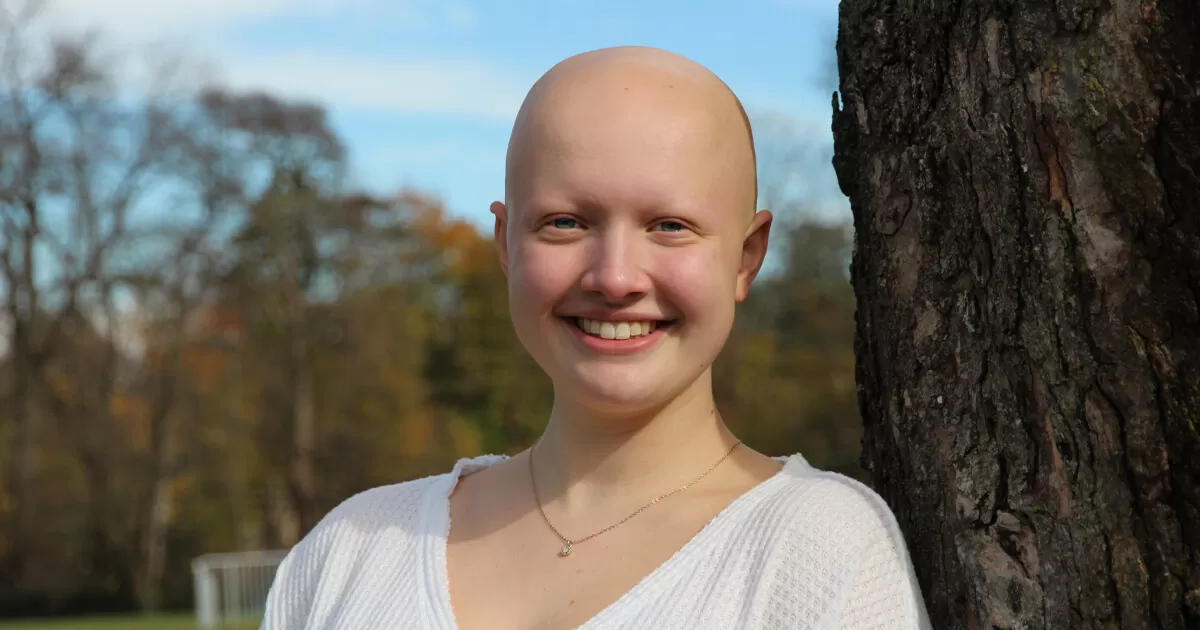Living with Alopecia: A Young Woman’s Path to Self-Acceptance

Six years old is a young age to become a patient advocate for a health condition. But Laura Pellicano had no choice. In the summer between kindergarten and the first grade, she lost all of the hair on her head, and then soon after, her eyebrows, eyelashes, and all body hair.
Laura has alopecia universalis, the most advanced form of alopecia areata, a condition that causes hair to fall out on the scalp and/or the body. She dreaded returning to school. “The kids had questions and it's definitely hard being so little and just trying to figure it out. I remember walking in and everyone's like, ‘Who's the new girl? Who's that?’ And I was like, ‘It's just Laura, just me.’"
To help ease the transition, Laura’s parents, Debora and Luis Pellicano, helped her prepare a presentation on the condition to give to her classmates that included a Rapunzel-like story of a girl who loses all of her hair. Throughout her school years, Laura, now 19, has presented a similar talk, answering questions about the condition and helping to break stigmas.
People often ask Laura if she has cancer or if she’s contagious. She’s completely healthy. A sophomore at Northeastern University in Boston, Laura has become a model of self-acceptance, as she’s grown up learning to put others at ease with her physical differences.
What is alopecia?
Alopecia areata (AA) is an autoimmune disorder causing the body’s own immune system to attack the hair follicles, the part of the skin that grows hair. This leads to hair loss in round patches on the scalp, face, and sometimes the body. About 2% of the population, or 6.8 million in the U.S. have the condition.
In some people, the condition can progress to alopecia totalis (complete hair loss on the scalp), and as in Laura’s case, alopecia universalis (loss of all body hair). These cases are rare—between 7% and 25% of people with alopecia areata go on to develop the more severe forms.
Researchers are still uncertain of what triggers this autoimmune disorder, although it’s believed to be a combination of genetics and environment. About 20% of affected people have family members with alopecia.
A focus on well-being
At the age of 5, Laura’s parents first noticed her hair falling out while brushing her hair. She was given an initial diagnosis of alopecia areata, but her doctor at the time assured her parents that it would grow back and “it’s no big deal,” recalls her mom Debora. The family then went through a two-year period of getting a variety of second opinions for their daughter, as well as trying holistic medicine, vitamins and an organic diet. But Laura’s hair never grew back.
They reached a turning point when they brought Laura to see a leading dermatologist at Johns Hopkins University, who told them “unfortunately there is nothing you can do to treat the condition,” recalls Debora. “Focus on her well-being, on creating a very strong, confident child,” Debora recalls the doctor saying. “Keep her busy in different areas, so she doesn't focus on that as much. And don't let this be the center of your family conversation because otherwise, it takes an emotional toll on your child."
For Debora and Luis, it was an emotional adjustment as well. Looking back, Debora says it was hard to even look at photos of their only child, Laura. “My husband and I struggled a lot, especially when Laura lost her eyebrows and eyelashes. For whatever reason, it's such an important definition of her face. The feeling I had was somebody kind of switched my kid right in a matter of a month, because this happened so fast,” says Debora, who has served on the board of directors of the National Alopecia Areata Foundation (NAAF) for a decade.
And with her condition so visible to the world, Debora often worried how much it would impact her daughter’s life. “The question I had when all of this happened is, ‘Is she going to be able to go to college, get a job, be happy and have a normal life?’” says Debora. “There's always that question in the back of my head like: ‘Is she okay internally or is she sad?’ And every step of her life has always been with this question from a mom’s perspective: Would things be easier for her if she didn't have alopecia?”
‘They look just like me’
With support from her family, Laura found her way and even thrived. Early on, Laura made a choice not to cover up her bald head with a wig or hat. “I just for some reason felt like if I was not going to have hair, I might as well accept it and just learn to live with it and learn to tell people about it,” says Laura.
During her elementary school years, she went through a period where she struggled with bullying and constantly having to explain herself to peers. Her parents eventually switched her to a private school, where she fared better in a smaller setting where the kids became comfortable with her.
Connecting with other kids with alopecia has been an important part of her journey. When she was 8, she attended her first NAAF kids camp in Texas. “There were like a hundred kids who looked just like me and I was like, ‘Wow, I don't have to explain myself,’” says Laura. Her dad loves telling the story that when he first went to pick her up at the pool, he couldn’t locate his daughter in the sea of bald children. “Just having kids that look like you, makes you feel less alone,” she adds.
Her NAAF friends continue to play an important role in her life. Although they’re spread out around the country, she can quickly reach out to them in their message group to ask advice on issues she’s facing.
Looking to the future
For Laura’s first semester at college, she decided to study abroad in Australia. While any parent would worry about their child being so far away from home, Debora had an added layer of worry of how her daughter would be treated with her condition.
Laura ended up having the best time of her life, she says. “I do remember being like okay this is another time when I have to explain myself. So, I remember one of the first days I had moved in with my roommates and I sat down, I was like, ‘Hey, just to let you know I have alopecia and here’s some information to read about it.’ And they're like, ‘Okay that's fine, all right.’" So, I definitely think getting older really helps.”
In the future, Laura, who is a biology major, is interested in working in the pharmaceutical industry, and possibly working with patients and clinical trials. “I think that really stems from having alopecia. I’ve been around it my whole life, so I’m super interested in helping other patients.”
References
- 1. Genetic and Rare Disease Information Center (GARD). National Center for Advancing Translational Sciences. Alopecia Areata. Accessed on March 18, 2020.
- 2. Genetic and Rare Disease Information Center (GARD). National Center for Advancing Translational Sciences. Alopecia universalis. Accessed on March 18, 2020.
- 3. National Alopecia Areata Foundation. What You Need to Know About Alopecia Areata. Accessed on March 18, 2020.





